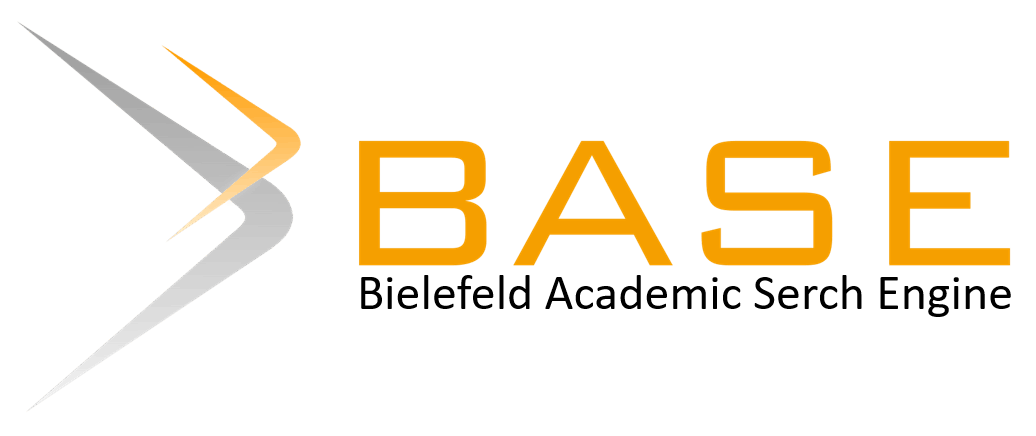Development of student worksheet on growth and development of drought-stressed plants
Abstract
This study aimed to determine the validity, practicality, and effectiveness of developing student worksheets on the growth and development of drought-stressed plant material. The subjects of this study were students of 12th grade Science 1 of Senior High School 1 Tapa. The worksheet development used the ADDIE development model. The instruments used were Validation Sheets, Learning Implementation, Student Activities, Student Response Questionnaires, and THB questions. Student worksheet based on drought stressed plant study of growth and development material has met the valid, practical and effective categories. Based on the results obtained from the validation and trial of products on a limited scale, the development of student worksheets on the growth and development of drought-stressed plant material is suitable to be used for learning, as well as practical, and can improve student learning outcomes.
Keywords
Full Text:
PDFReferences
Afrina, A., Abbas, E. W., & Susanto, H. (2021). The role of historical science in social studies learning materials for increasing values of student's nationalism. The Innovation of Social Studies Journal, 3(1), 1-8.
Effendy, I., & Hamid, M. A. (2016). Pengaruh pemberian pre-test dan post-test terhadap hasil belajar mata diklat hdw. dev.100.2.a pada siswa SMK Negeri 2 Lubuk Basung. Jurnal Ilmiah Pendidikan Teknik Elektro, 1(2), 81-88.
Fitriyah, B., Kuntjoro, S., & Indah, N. K. (2013). Kelayakan teoritis lembar kerja siswa berbasis penemuan terbimbing pada materi pencemaran lingkungan. Jurnal BioEdu, 2(3), 302-305.
Hasibuan, A. M., Saragih, S., & Amry, Z. (2019). Development of learning materials based on realistic mathematics education to improve problem solving ability and student learning independence. International Electronic Journal of Mathematics Education, 14(1), 243-252.
Lindsay, G. (2007). Educational psychology and the effectiveness of inclusive education/mainstreaming. British journal of educational psychology, 77(1), 1-24.
Lufri, L., Laili, F., & Anhar, A. (2020). Effect of active learning in from of scientific approach with assistance of student worksheets-based problem-based learning (PBL) towards students’ biology psychomotor competence in bacterial material. Journal of Educational Sciences, 4(1), 20-29.
Listiyawati, M. (2012). Pengembangan perangkat pembelajaran IPA Terpadu di SMP. Journal of Innovative Science Education. JISE, 1(1), 61-69.
Mustofa, Z., Sutopo, S., Mufti, N., & Asmichatin, A. (2019). The impact of modeling instruction based on system toward work-energy concept understanding. Jurnal Penelitian & Pengembangan Pendidikan Fisika, 5(2), 145-154.
Pane, A., & Dasopang, M. D. (2017). Belajar dan pembelajaran. FITRAH: Jurnal Kajian Ilmu-ilmu Keislaman, 3(2), 333-352.
Petrović, I., Savić, S., Jovanović, Z., Stikić, R., Brunel, B., Serino, S., & Bertin, N. (2019). Fruit quality of cherry and large fruited tomato genotypes as influenced by water deficit. Jurnal Agriculture. 106(2), 123-128.
Prasad, P. V. V., Staggenborg, S. A., & Ristic, Z. (2008). Impacts of drought and/or heat stress on physiological, developmental, growth, and yield processes of crop plants. Response of crops to limited water: Understanding and modeling water stress effects on plant growth processes, 1, 301-355.
Putri, E. W., & Ranu, M. E. (2019). Pengembangan lembar kerja siswa berbasis scientific approach pada mata pelajaran otomatisasi tata kelola kepegawaian semester genap kelas XI di SMK Negeri 2 Tuban. Jurnal Pendidikan Administrasi Perkantoran, 7(2), 73-80.
Ramadhana, R., & Hadi, A. (2022). Efektifitas penerapan model pembelajaran berbasis e-learning berbantuan lembar kerja siswa elektronik terhadap hasil belajar peserta didik. Jurnal Ilmu Pendidikan, 4(1), 380-389.
Rando, A. R. (2016). Pengembangan perangkat pembelajaran dalam implementasi strategi contextual teaching learning untuk meningkatkan hasil belajar IPS pokok bahasan perkembangan teknologi pada siswa kelas IV SD. Jurnal Pendidikan, 1(1), 1-11.
Rizki, A. L., & Ranu, M. E. (2019). Pengembangan lembar kerja peserta didik (LKPD) berbasis konstektual pada mata pelajaran administrasi kepegawaian kelas XII semester gasal di SMK Negeri 2 Tuban. Jurnal Pendidikan Adminstrasi Perkantoran, 7(2), 59-66.
Rosmalinda, D., Rusdi, M., & Hariyadi, B. (2013). Pengembangan modul praktikum kimia SMA berbasis PBL (Problem Based Learning). Jurnal EduSains, 2(2), 1-7.
Rumapea, G., Syahputra, E., & Surya, E. (2017). Application of quantum teaching learning model to improve student learning outcomes. International Journal of Novel Research in Education and Learning, 4(2), 118-130.
Salam, A., Kuswanti N., & Hayati, N. (2021). Pengembangan lembar kerja peserta didik (LKPD) berbasis pendekatan saintifik pada materi besaran dan pengukuran untuk kelas VII SMP. Jurnal Discovery, 6(1), 28-36.
Sari, W., Jufrida., & Pathoni, H. (2017). Pengembangan modul elektronik berbasis 3D Pageflip Profesional pada materi konsep dasar fisika dan struktur inti mata kuliah fisika atom dan inti. Jurnal Edu Fisika, 2(1), 38-50.
Septiana, E., Risdianto, E., Hamdani, D., Abdu, M., & Endang, E. (2022). Need response analysis to the development of e-comics in material quantities and units. JMKSP (Jurnal Manajemen, Kepemimpinan, dan Supervisi Pendidikan), 7(1), 241-257.
Tafonao, T. (2018). Peranan media pembelajaran dalam meningkatkan minat belajar mahasiswa. Jurnal komunikasi pendidikan, 2(2), 103-114.
Tegeh, I. M., & Kirna, I. M. (2013). Pengembangan bahan ajar metode penelitian pendidikan dengan addie model. Jurnal Ika, 11(1), 12-26.
Yazid, K., Susantini, E., & Fitrihidajati, H. (2016). Validitas buku saku materi ekologi untuk siswa kelas X SMA. Jurnal BioEdu, 5(3), 390-396.
Yusuf, F. M., Nusantari, E., Abdul, A., & Abdan, H. (2019). Pengembangan perangkat pembelajaran berbasis inkuiri terbimbing untuk meningkatkan hasil belajar dan literasi sains siswa pada konsep pembelahan sel. Jurnal Proceeding of the ICECRS, 2(1), 253-260.
Van der Veer, K., Ommundsen, R., Yakushko, O., Higler, L., Woelders, S., & Hagen, K. A. (2013). Psychometrically and qualitatively validating a cross-national cumulative measure of fear-based xenophobia. Quality & Quantity, 47, 1429-1444.
Zagoto, M. M., & Dakhi, O. (2018). Pengembangan perangkat perangkat pembelajaran matematika peminatan berbasis pendekatan saintifik untuk siswa kelas XI sekolah menengah atas. Jurnal Review Pendidikan dan Pengajaran (JRPP), 1(1), 157-170.
Zhang, G., Zeller, N., Griffith, R., Metcalf, D., Williams, J., Shea, C., & Misulis, K. (2011). Using the context, input, process, and product evaluation model (CIPP) as a comprehensive framework to guide the planning, implementation, and assessment of service-learning programs. Journal of Higher Education Outreach and Engagement, 15(4), 57-84.
DOI: https://doi.org/10.17509/aijbe.v6i1.54328
Refbacks
- There are currently no refbacks.
 AIJBE is under Creative Commons Attribution-ShareAlike 4.0 International License
AIJBE is under Creative Commons Attribution-ShareAlike 4.0 International License









